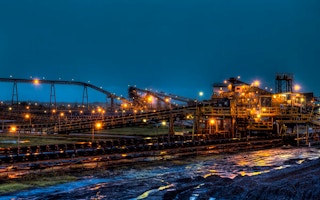Trapping carbon dioxide emissions may be technically feasible, but commercial success could evade Southeast Asia due to its high cost and “practically non-existent” carbon pricing mechanisms in the region, a new report found.
To continue reading, subscribe to Eco‑Business.
There's something for everyone. We offer a range of subscription plans.
- Access our stories and receive our Insights Weekly newsletter with the free EB Member plan.
- Unlock unlimited access to our content and archive with EB Circle.
- Publish your content with EB Premium.
The hurdle is especially steep when applying carbon capture, utilisation and storage, or CCUS, to fossil fuel power generation, despite the pairing being widely touted as a climate solution, particularly for Asia where there may be high financial penalties in closing down young coal plants.
Southeast Asia policymakers need to be clear on the “myths and realities” of CCUS, according to the Institute for Energy Economics and Financial Analysis, a United States-based think-tank.
“It should not distract from the adoption of other lower-cost and proven carbon abatement options in renewable energy and grid integrations,” said report author, Putra Adhiguna.
The report said it is unlikely that Southeast Asia countries will adopt a carbon price of US$50 per tonne of carbon dioxide anytime soon – the level at which the International Energy Agency (IEA) estimates will make shelling out funds to capture carbon emissions financially sound.
Currently, Singapore is the only country in the region that charges for emissions at S$5 (US$3.70) a tonne. The rate will is set to rise to S$25 (US$18) in 2024, and will possibly be increased to S$80 (US$58) in 2030. Indonesia was set to implement a carbon tax of US$2 in April, but it has been delayed to July.
Singapore has announced its intention to become a regional CCUS leader and has pumped millions of dollars into research. The rich city-state is an exception in the region, the study said.
Even wealthy nations struggle with financing CCUS for power plants, the report added, which further dims the outlook for cash-strapped Southeast Asia. The only operating commercial project worldwide that came online in 2014, tagged to a coal plant in Canada, has received US$188 million in state funding. Another project in the United States was shut down in 2020 after four years, amid bad financial and performance results.
Coal and gas plants made up over 60 per cent of the installed power capacity in Southeast Asia in 2020. Retrofitting CCUS onto these plants could increase electricity prices by up to 9 cents per kilowatt-hour (kWh), the study said. It amounts to a hefty hike – domestic electricity prices in Southeast Asia ranged from 10 to 20 cents per kWh in 2018.
Concerns about the cost of pursuing CCUS was also flagged by the Asia Investor Group on Climate Change, whose members control more than US$36 trillion in assets under management. It said late last year that financial and operational hurdles could plague Asia for decades.
Marc Allen, an energy consultant not involved in the study, said the difficulty in financing CCUS projects for power plants is a problem not just for Southeast Asia, but the world. Such projects will face increasingly stiff competition from renewables and batteries, he said.
Costs have dropped by over 85 per cent for technologies such as solar panels and lithium-ion batteries in the last decade.
“CCUS will be deployed at a growing scale in future but it will largely be on hard-to-abate sectors while other technologies catch up. This includes steel, cement and chemicals sectors,” said Allen, who co-founded Singapore-based climate-tech platform Unravel Carbon last year.
But for Southeast Asia, where coal plants are young and expensive to close down quickly, the solution may lie in retrofitting facilities to run on cleaner biofuels or hydrogen gas instead, Allen added.
Multilateral financing groups such as the Asian Development Bank and Climate Investment Funds are also looking at ways to buy coal plants out to close them early.
CCUS in natural gas processing
While the door to retrofitting power plants with CCUS remains closed for Southeast Asia, the technology has gained a foothold in more affordable applications.
According to the IEEFA study, five of seven planned CCUS projects in the region are meant to trap emissions from natural gas processing facilities. Four projects are in Indonesia and one is in Malaysia. The two countries dominate gas production in the region. IEEFA estimates these projects amount to nearly half of the global capacity of gas processing CCUS projects.
Capturing carbon dioxide in natural gas processing, which is already an established step in the refining process, costs only US$15-25 per tonne of emissions. That’s about a quarter the cost of applying the technology to power generation.
However, emissions captured in gas processing plants arise from the production of natural gas, and not its use. More emissions will still be released down the road when gas is burned.
Most of the carbon dioxide trapped using CCUS today is also pumped into oil wells to help with crude extraction – further reducing the overall efficiency of the technology in cutting emissions.
Two more planned CCUS projects in Indonesia and Singapore are set to trap emissions from industrial activities such as ammonia production.
“The CCUS train may eventually arrive, but before it does, it will likely need to make a lot of stops before eventually reaching Southeast Asian shores. With the clock ticking toward the 2050 decarbonisation timeline, Southeast Asia policymakers need to look closely at whether this is the right train to rely on,” the IEEFA report stated.








